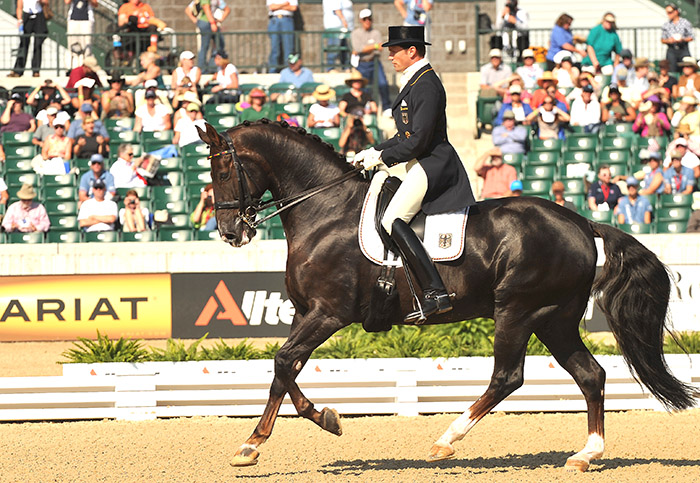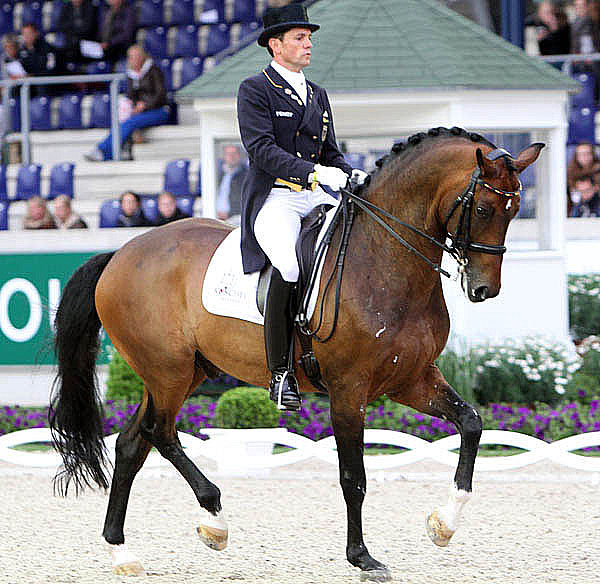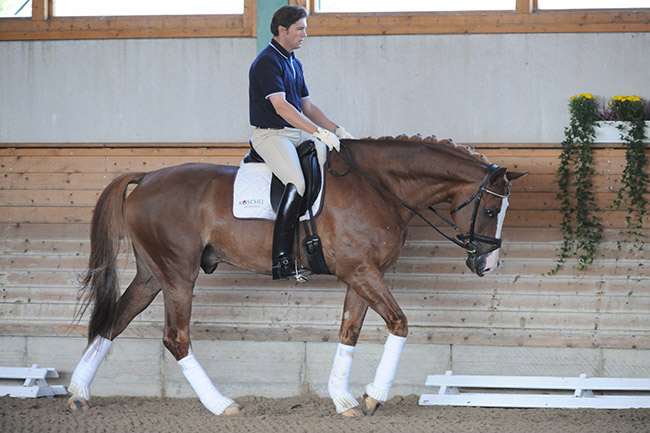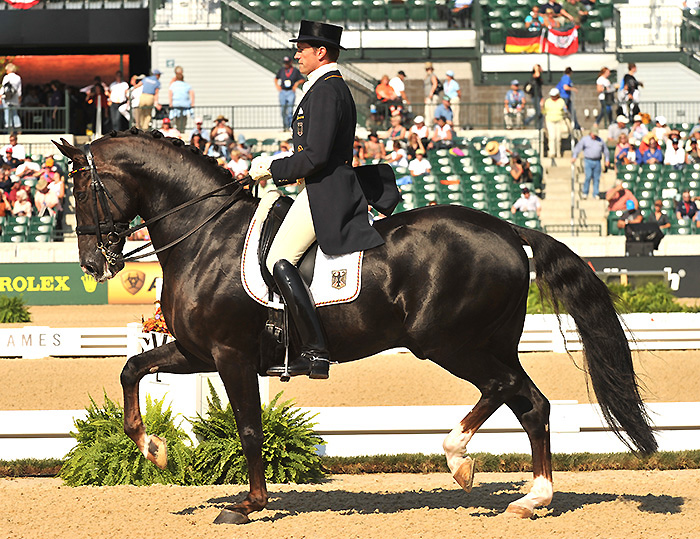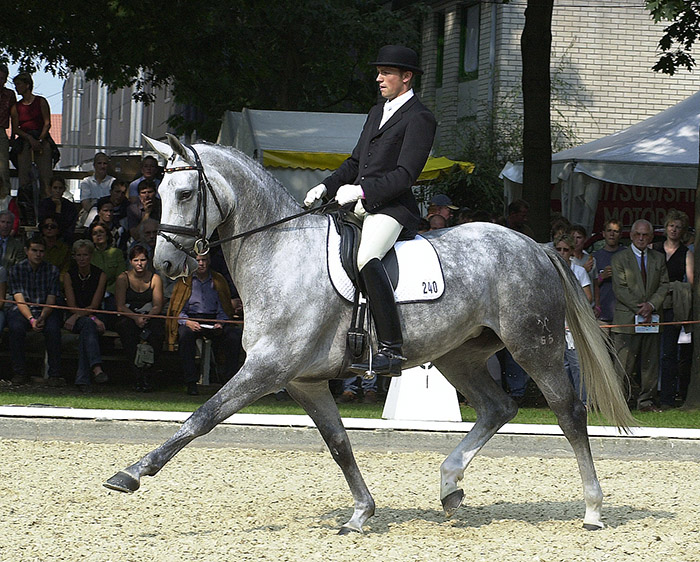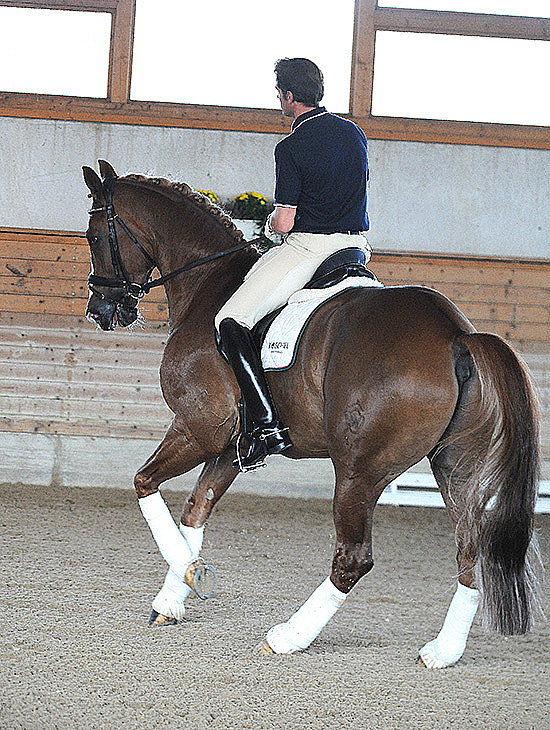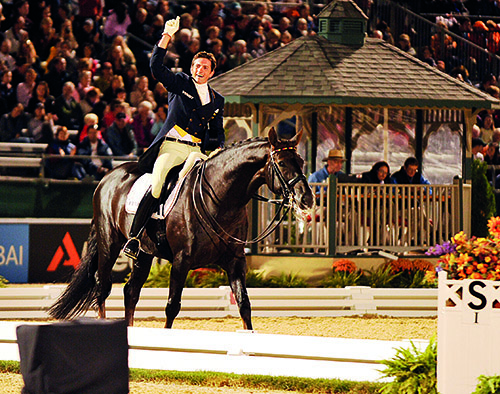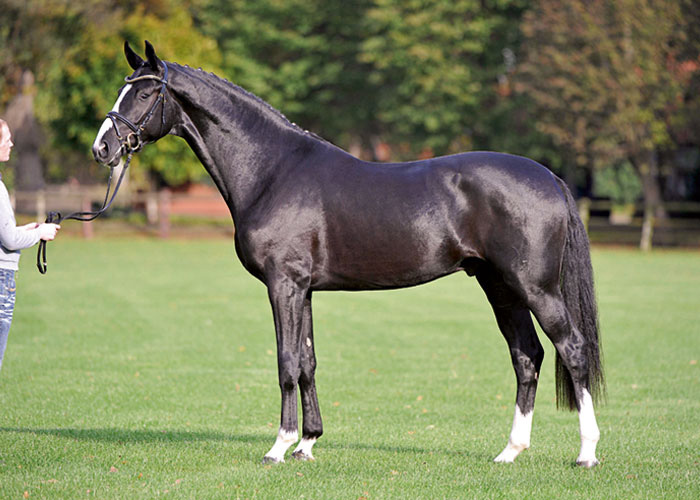“The most important thing for me with the young horse is the rideability and ability for collection. I don’t prefer the big movers because if you have a strong enough hind leg, a good motor behind, and rideability, then you can make a lot out of it.”
Christoph and Donnerperignon representing Germany at the 2010 WEG
Normally these are the better ones later on for the Grand Prix. Maybe they are not so successful in the young horse classes where they want to see a big moving and very supple, easy and calm horse. That’s a little bit the problem that we have in our young horse classes in Germany because the judges still look a little too much for really supple and calm horses, and for me a young horse at ages four, five or six, they can be a little hot or a little spooky because they have to take care of what’s going on, and if they are already like a dead cow at that age, not caring about anything, they will not be sharp enough later on to be a good Grand Prix horse, or at least it’s really rare. You can see from the top 50 of the world rankings, most of them are not big movers from birth. So what I look for in a young horse is this little extra special thing; they have to be sensitive and sharp but they also have to be rideable, that’s for sure. But a strong hindleg is important also.”
Christoph and Rostropowitsch at Aachen – Photo Kenneth Braddick Dressage-News
“I think you have to find the way for each horse. What I learnt is to pick the best from everything, and find the best for your horse. I stay only with the classical training, but maybe it doesn’t fit with that horse. I believe it has to be classical in a way; it has to look good, it has to be effective and it has to be fair. That’s the most important thing. But I think a general system for every horse does not exist. A good rider can find the right way for a special horse.”
story continues below the advertisement
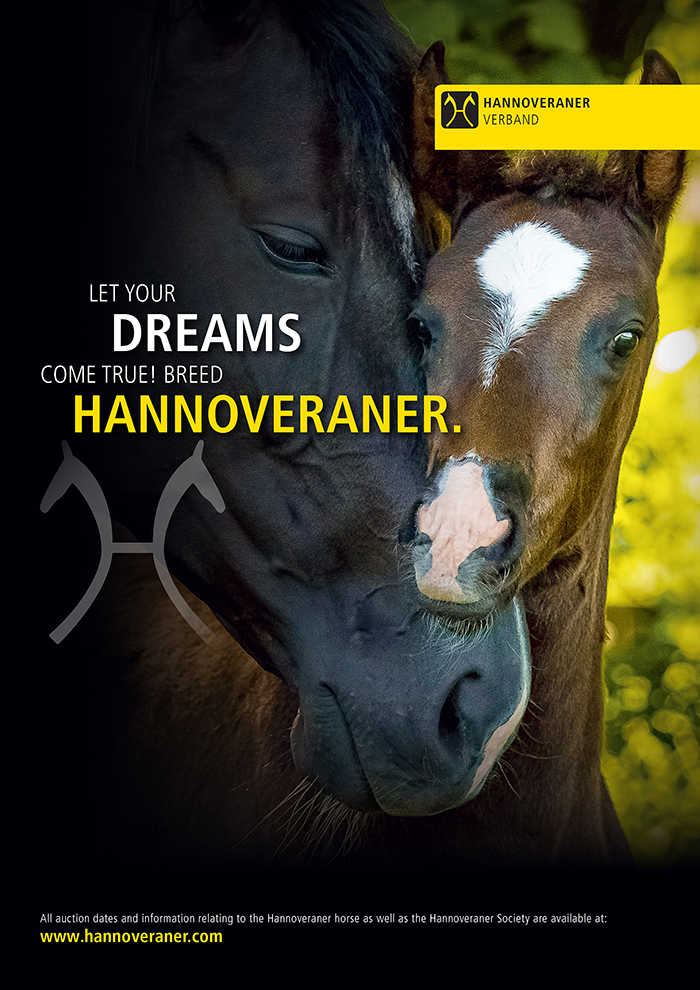
“But I think sometimes you just leave them a horse, and it’s better to put them out in the field as it’s more natural. It is always possible to put a horse on the field. They grew up on the field, so why should you stop putting them in the field because they are ridden? Ok, so sometimes with a stallion it’s not so easy and some horses like to destroy themselves, but most of them, you have to maybe close your eyes for the first ten minutes, then normally they like to eat, so if there’s enough grass, it’s fine. I’m not a big fan of putting them on the sand paddock because there they jump around maybe a little bit too much, and then they hurt themselves. On a really nice grass field, it’s perfect. You just have to keep on doing it, then they are quiet, they’re nice to ride, and they see something else rather than sitting in a box for 23 hours. So, most of my horses go in the field, otherwise they get walked in hand and get grazed for sure. It really helps.”
Donnerperignon
My Donnerperignon was a direct Donnerhall son. If you compare Donnerhall to Weltmeyer or Sandro Hit or Florestan, the most famous bloodlines we have, when you see which stallion and his sons produced the most Grand Prix horses, it was always Donnerhall; fatherline, motherline, combined maybe with Weltmeyer on the motherline, all good. There has to be some D blood in and I’m happy.”
Davinia
I have had two very good D horses. I had a mare called Davinia. That was the grey mare and she was outstanding. She could have been a team horse for any team in the world. I sold her when she was nine years old because we were just building our barn at that time and she went to Tinne Vilhelmson.
story continues below the advertisement
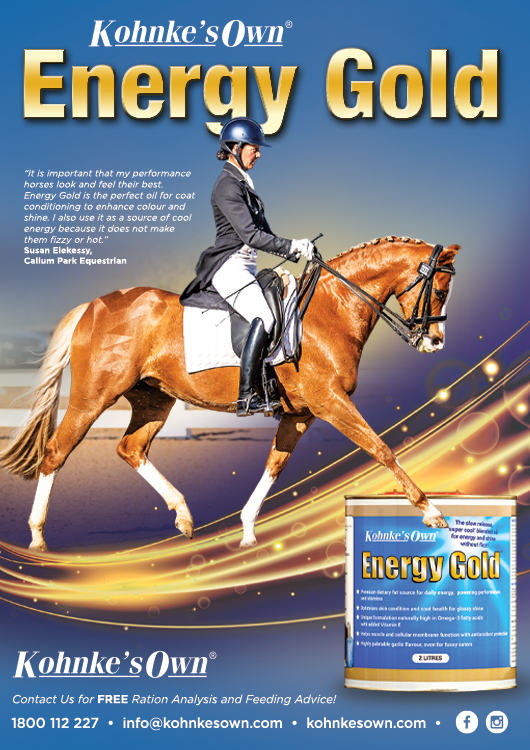
How early do you introduce the collected work?
“We start to play around with it normally at the beginning of their five year old year. Maybe start with a little in hand work just to test the talent of the horse – when you can see talent and they are willing to do it, then you stop – don’t do it too early. It’s different, some horses have the talent right from the beginning, some horses you can help, maybe they want to do it, but they don’t have the right rhythm and you can help them to find the rhythm. It’s a good age when they are five and six to just start with it, for a good Grand Prix horse, when they are seven they should be quite safe in piaffe and passage.”
One thing about your horse is that he always looks comfortable in the Grand Prix test, he never swishes his tail or anything like that… is that an art, to keep a horse happy in the work at Grand Prix level?
“I think so, it is true, he is a really happy horse, and I try at home with every horse to make every day different. Okay sometimes you have to work on the exercises, but we try to go out with the horses and go on the racetrack. We are lucky that we have the woods, and I take them out for rides in the woods. I do the conditioning work on the racetrack, a lot of canter work. When they can do everything and they are safe in the exercises then you have to find a way to keep them happy. With him for example, we had a lot of free time after Kentucky, he is still working every day, long enough to improve his condition – but no exercises at all, I just wanted to keep him happy. He really likes cantering on the racetrack.”
Looking for a ‘D’ Line stallion for this season? Go to: www.ihb.com.au
Danciano, a ‘D’ line stallion with the other top lines as well…

